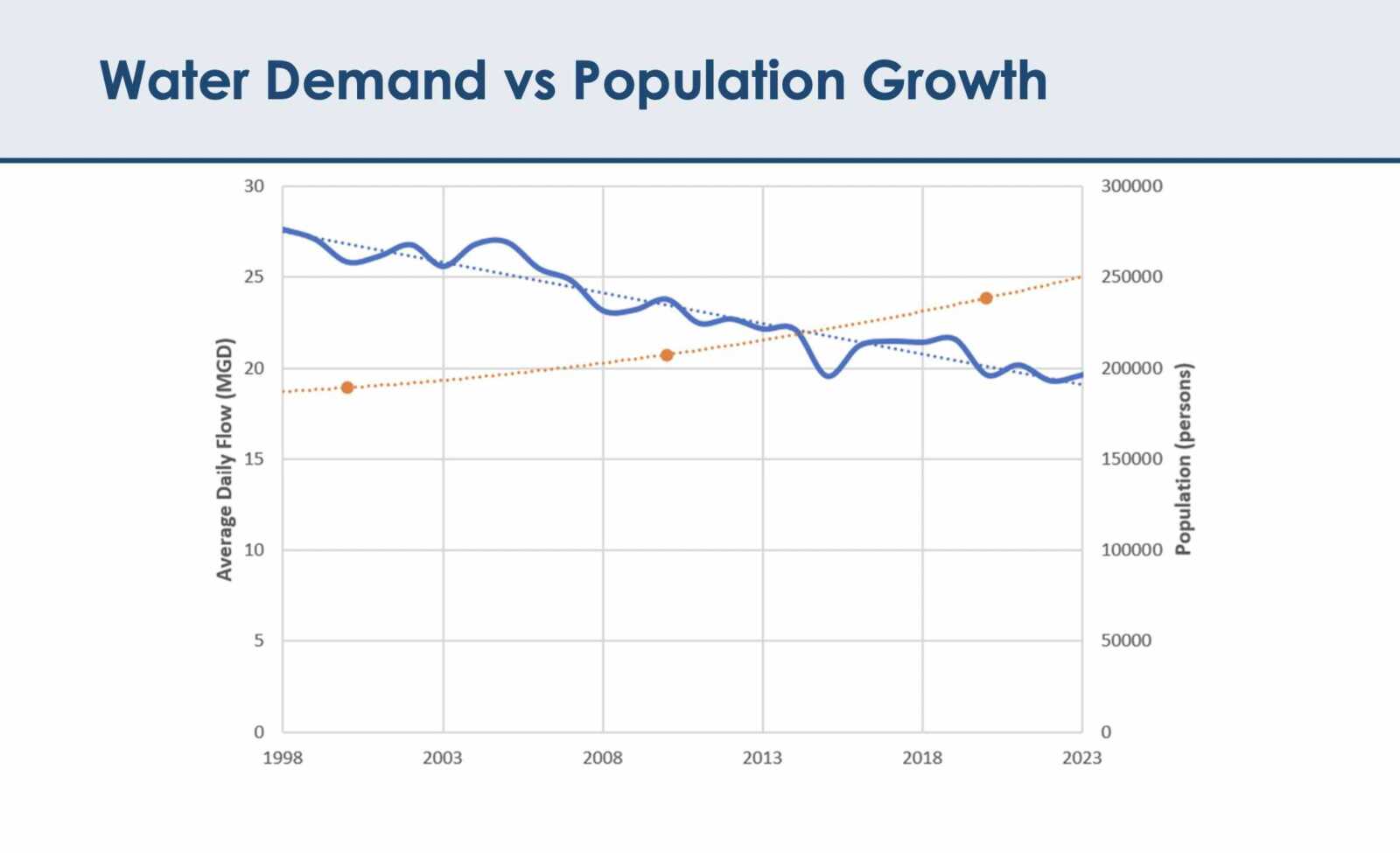
The Arlington County Board could approve a new sewer plan for the first time in 22 years tomorrow (Saturday).
The proposed Sanitary Sewer Collection System Plan is designed to prepare the county for continued growth through 2045. Despite the surge in development planned for the county over the next two decades, the plan does not call for expanding Arlington’s current sewer infrastructure.
Instead, according to a county report, the most substantial change would be an increase in how often the county cleans out small-diameter sanitary sewers. Flushing pipes of 12 inches in diameter and less every five years would cost $330,000 annually, increasing the average household’s water bill by about $2.11 each year.
The Arlington County Board is scheduled to vote on the proposed plan at a meeting tomorrow morning.
The reason the county does not need more sewer lines, according to a staff presentation to the Planning Commission last week, is that plumbing fixtures and appliances have become more efficient over time. Every day, Arlington uses about 5 million gallons of water less than when the county approved the current sewer plan in 2002.
This is despite the fact that the county has about 46,000 more residents than it did 22 years ago.
“The trends are going the right way,” Planning Commissioner James Lantelme said last week. “We’re using less water.”
Population growth between now and 2045 is expected to increase Arlington’s water usage by about 27%, or 6 million gallons per day, according to the presentation. This is still less than the county used in the late 1990s.

At about 20 million gallons per day, the county currently uses about as much water as it did in the 1960s, when it had 73,000 fewer people.
“Adding additional neighbors to our county is something that we can support,” Lantelme said. “Our infrastructure is robust enough that we can add all these people comfortably and safely.”
Arlington’s water-use projections contrast with allegations from some residents that the county lacks the infrastructure to keep up with projected growth. For instance, a lawsuit filed last April claims that the county violated state law in passing its Missing Middle zoning code changes without fully considering possible impacts on infrastructure, including sewer systems.
In March 2023, the Arlington County Board approved changes to the zoning code allowing up to 6-unit dwellings on lots previously zoned only for single-family homes. The Board also approved a set of limitations intended to control the pace and impact of development, including parking minimums, permit caps and tree planting requirements.
But Arlington Neighbors for Neighborhoods, a group that issued a press release on behalf of the plaintiffs, claims that was not enough.
“State law requires that zoning ordinances consider needs for transportation, schools, parks, recreation, and public spaces, as well as the conservation of natural resources,” the statement said. “The law also requires consideration of a locality’s comprehensive plan, which addresses stormwater, sanitary sewer, water distribution and more.”
While the revised sewer plan does not recommend expanding current infrastructure, it calls for continued improvement projects such as relining the county’s existing pipes, many of which are between 75 and 100 years old. The county has been working on relining projects for a number of years and so far has relined 58% of the sanitary sewer system, according to the county report.
Photo (top) via Arlington Dept. of Environmental Services/Flickr

